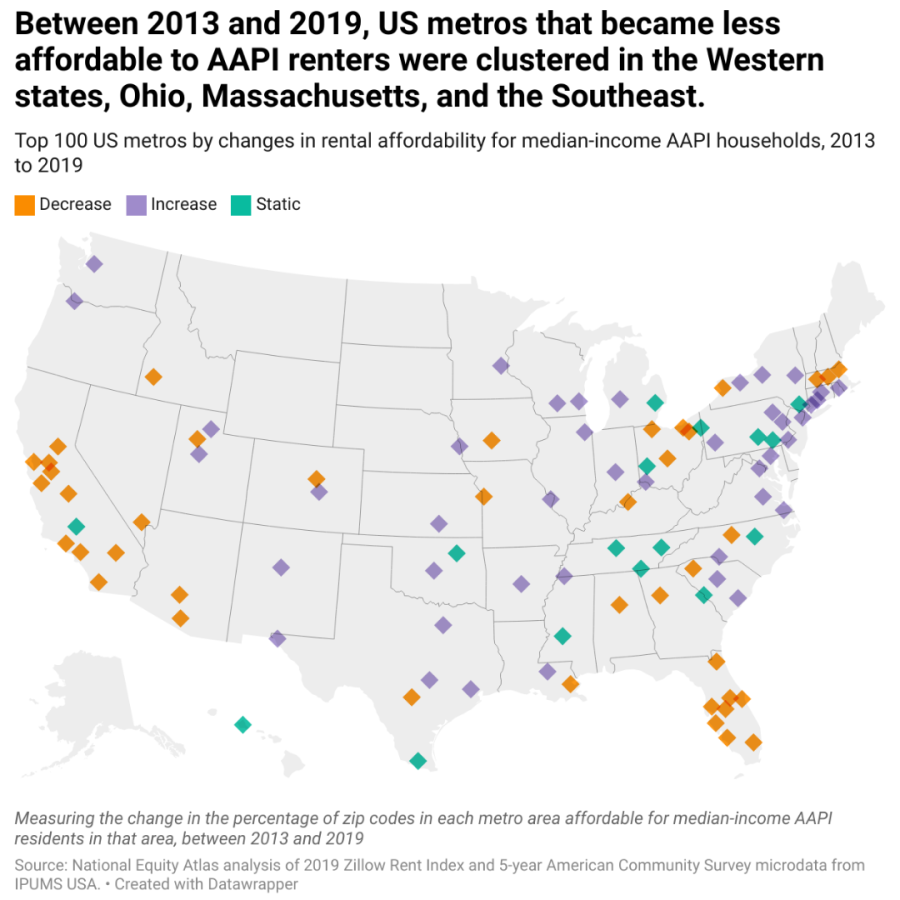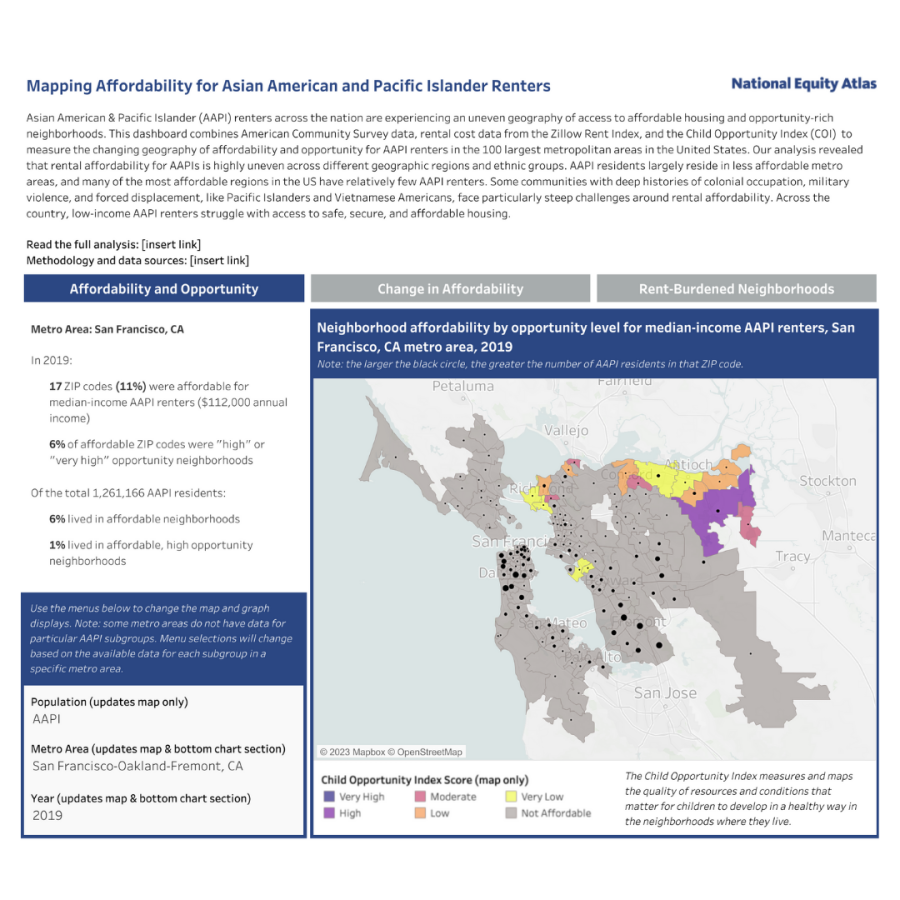Atlanta, Georgia
Over the past several decades, the Atlanta metropolitan area has experienced a widespread demographic transformation, with many of the suburbs encircling the boundaries of the City of Atlanta becoming majority people of color. Asian American and Pacific Islander (AAPI) communities have been a formative part of that change. Among the 100 largest US metro areas, the Atlanta region witnessed the 10th-largest increase in the local AAPI population between 2013 and 2019, adding more than 75,000 residents in those six years. Indian American residents accounted for a large majority of that growth, with an increase of nearly 50,000 new residents during that period.
These demographic shifts have occurred alongside a surge in the region’s biomedical and tech sectors, as well as growth in electric vehicle and battery manufacturing. New employment opportunities and relatively affordable housing costs have drawn a diverse array of workers and families to the region, both from abroad and from other parts of the US. This in-migration has included many high-wage, highly educated AAPI workers. As is the case in many metro areas, the median income for AAPI households is higher than the median area income for all residents. Nearly three-quarters (73 percent) of AAPI residents live in zip codes that are affordable for median-income AAPI households, while just 40 percent of residents overall live in zip codes affordable for the median-income household regardless of race.
However, the Atlanta metropolitan area is broadly characterized by a geographic divide in opportunity. The majority of the region’s neighborhoods with “high” and “very high” Child Opportunity Index scores lie in the counties north of Downtown Atlanta, and the majority of low-opportunity areas are in the counties south of the district. While AAPIs live throughout the entire metro area, the largest AAPI communities are north of downtown — in Gwinnett County and the northern part of Fulton County. Some of these areas with relatively large AAPI communities overlap with the strip of high-opportunity neighborhoods north of downtown that were unaffordable for median-income AAPI households in 2019. In all, a majority (59 percent) of AAPI residents reside in high-opportunity zip codes (based on the Child Opportunity Index), but only one-third of AAPIs in the region lived in zip codes that were both affordable and high opportunity. This means that about one in four AAPIs in the region resided in an area that was too expensive for the median-income AAPI household.
Stated otherwise, the region’s growing numbers of high-wage AAPI households coexist alongside many low-income AAPI communities across Metro Atlanta. The tragic shootings at three spas in March 2021, in which six of the eight victims were Korean and Chinese immigrant women, demonstrated the presence of many working-class AAPI residents who might otherwise go unnoticed. While median-income AAPI households largely reside in affordable neighborhoods, the numbers are far lower for individual ethnic communities. In 2019, fewer than half of Chinese and Vietnamese American residents (the second and third-largest AAPI communities in Atlanta) lived in neighborhoods affordable for the median-income household in each community. Only 10 percent of the region’s 45,000 Korean American residents (the fourth-largest AAPI group) lived in affordable neighborhoods, and none of those areas was high-opportunity.
Rising housing costs in Metro Atlanta’s central areas have been leading to out-migrations of many AAPI residents to more outlying areas of the region — a pattern also observed in far less affordable regions, like the San Francisco Bay Area and New York City. Despite the high concentrations of AAPIs in some areas of Metro Atlanta, there are also many other pockets of AAPI communities dispersed throughout the entire region. In addition, one in five AAPI residents lived in low-opportunity neighborhoods in 2019. The areas east of downtown have long been home to different Southeast Asian refugee populations, and the entire region is home to many undocumented AAPI residents.
This amounts to tens of thousands of AAPIs throughout the region who might struggle with accessing culturally affirmative, language-friendly supports and/or face limited local resources to help their children thrive. The growing prominence of high-income STEM workers who are helping transform Metro Atlanta’s formerly all-white suburbs should not obscure the many other AAPI families struggling to find living wages and affordable housing.
Jennifer Lee, the policy director for Asian Americans Advancing Justice - Atlanta, contributed observations and insights to this profile.


